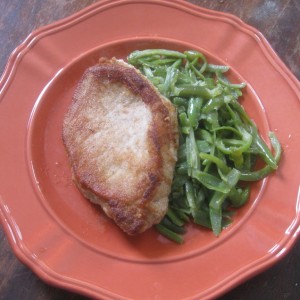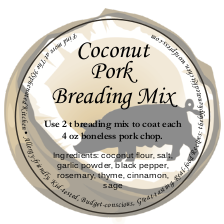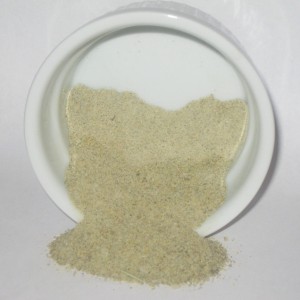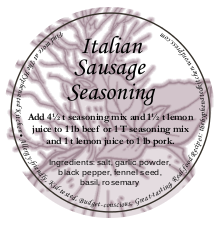Growing up, my mom was a big fan of the “Shake ‘N Bake” breading method. I have always preferred using my own mixes to coat meats. Once I’d cut grains from my diet, I tried using almond flour as a breading, but only found limited success. And with the price of almond flour, I hate to waste it on recipes my family may or may not eat. One evening, inspiration struck–coconut flour to the rescue! The kids cheer when I make these for dinner, plus I’m saving about 85% compared to a coating made with almond flour.
¼ c coconut flour (28 g)
1 t salt
½ t black pepper
½ garlic powder
¼ t rubbed sage
¼ t ground thyme
¼ t crushed rosemary
⅛ t cinnamon
8 4-oz boneless pork loin chops (908 g)
3-4 T coconut oil for frying
- Whisk together dry ingredients in a shallow container
- Dredge medallions in coconut flour mixture
- Fry in coconut oil over medium-high heat 3-4 min per side, or until the internal temperature reaches at least 145°F
- Allow chops to rest 3 min before serving
You can also mix up a big batch of breading to give as a gift or to keep on hand in your own pantry for quick weeknight meals. Just use 2 t breading mix to coat each 4-oz chop.
I created a simple label you can use for your mix. Just click here or on the label image to download the PDF.
What is your favorite way to serve breaded meats?




